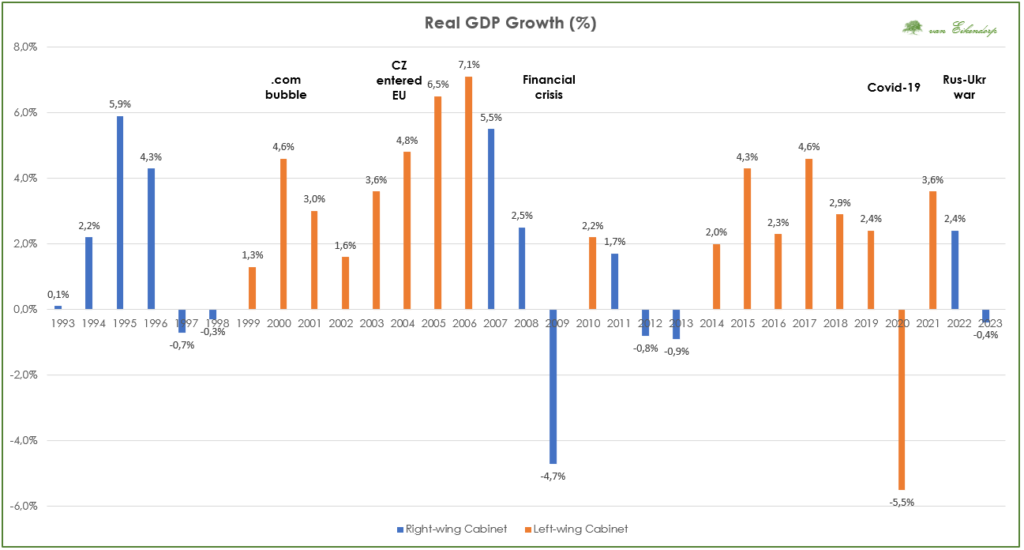In addition to family and business management, there is also state management. This also affects every individual, because if the state does not manage well, its efforts to extort money from citizens increase.
Let’s see how the governments of the independent Czech Republic have fared since 1993. 30 years is quite a long time, during which there have certainly been better years and worse ones. How were these periods reflected in state finances?
The first graph shows the state budget. Out of 30 years, 4 surplus and 26 deficit.
From the party point of view, the surpluses of the right-wing and left-wing governments were amicably divided 2:2. For the deficits it was 12:14, so also almost a match.
The fairly favorable trend of reducing deficits after 2003, correlated with the entry into the EU, was severely halted by the financial crisis in 2009. Subsequently, the deficits again fell to surpluses in 2016 and 2018. A turn in the downward trend was already felt in 2019, and the covid epidemic, or . the reaction to it brought unprecedented deficits, from which the state budget has not recovered to this day.
In general, it can be said that the international situation has a greater influence on finance than the government, and that no period of prosperity can be identified in this graph. It’s more like a kind of staggering from crisis to crisis.
How the state is in debt as a whole can be seen on the next graph.
The total national debt (debt of the government, municipalities, …) is more or less constantly growing, regardless of the type of government. It was only in 5 years that the debt was slightly reduced.
The question of who, when and how the debt will be repaid does not yet have a clear answer. More precisely, the debt does not need to be completely zeroed out, but at least stabilized at a level where it is possible to service it from income. With constant growth, a situation may arise where the debt will be unpayable, which may lead to a situation where no one can be found who wants to lend to such an indebted entity. Of course, you can always resort to some form of “turn off-turn on”, but probably no one in the right mind wants that.
Government consumption is part of GDP. So has government spending contributed in any way to our well-being? At first glance, the following graph inspires optimism. Real GDP (ie the annual performance of the economy) is still growing.

But a second look will show that the trend of GDP increases is stagnant or slightly decreasing, if we ignore the “small ripples”. The conclusion is therefore clear, more and more indebtedness is needed for one crown of GDP growth.
